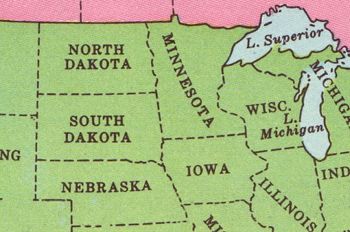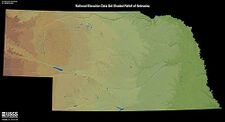Nebraska (U.S. state): Difference between revisions
imported>James F. Perry (moving external link to subpage) |
imported>James F. Perry (add shaded relief map) |
||
| Line 4: | Line 4: | ||
Known as the Cornhusker State, Nebraska is a major producer of agricultural products. The state bird is the Western Meadowlark, and the state flower the goldenrod. | Known as the Cornhusker State, Nebraska is a major producer of agricultural products. The state bird is the Western Meadowlark, and the state flower the goldenrod. | ||
==Land== | |||
===Physiography (land forms)=== | |||
{{Image|Nebraska.jpg|right|225px|USGS shaded relief map of Nebraska}} | |||
===Rivers and drainage, lakes=== | |||
===Climate=== | |||
===Soil=== | |||
===Flora=== | |||
== History == | == History == | ||
Revision as of 10:54, 29 March 2010
Nebraska is a great plains state in the central United States of America. The name is derived from a Native American word meaning "flat water", referring to the Platte River, which flows across the state.
Known as the Cornhusker State, Nebraska is a major producer of agricultural products. The state bird is the Western Meadowlark, and the state flower the goldenrod.
Land
Physiography (land forms)
Rivers and drainage, lakes
Climate
Soil
Flora
History
Nebraska became a U.S. territory in 1854, with the seat of territorial government in Omaha. Nebraska became the 37th state to join the USA on March 1, 1867, when President Andrew Johnson signed its statehood bill. With statehood came a new capital, Lincoln, a tiny village formerly called Lancaster and renamed after the recently assassinated president.
The first state capitol building was completed in December 1868 just in time for the 1869 legislative session to be held in the new building.

